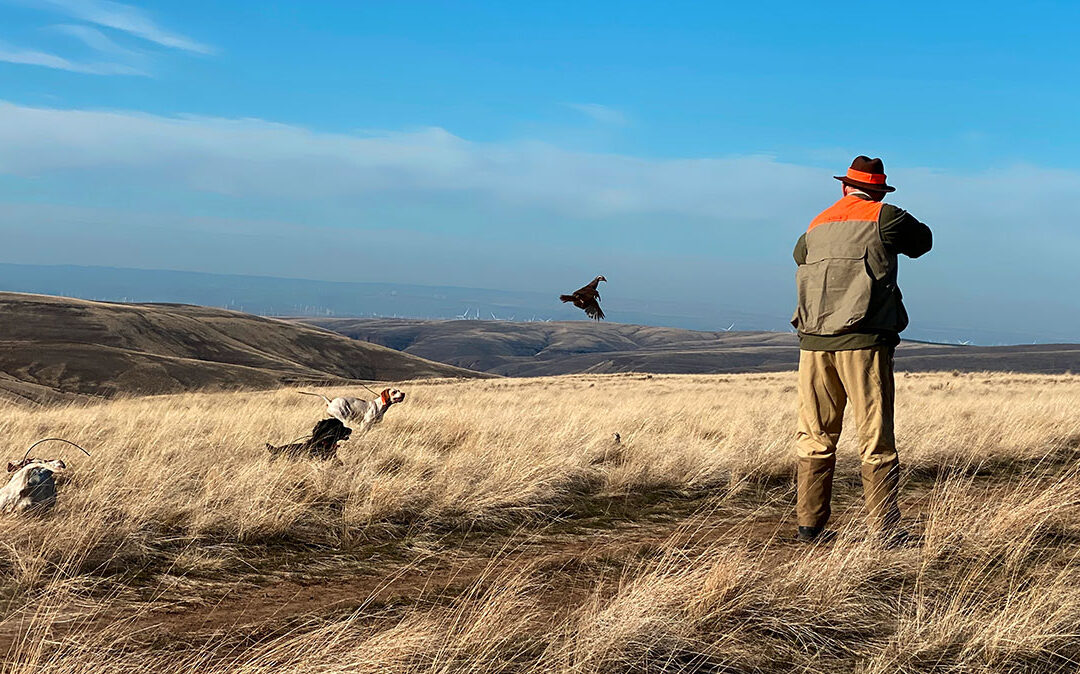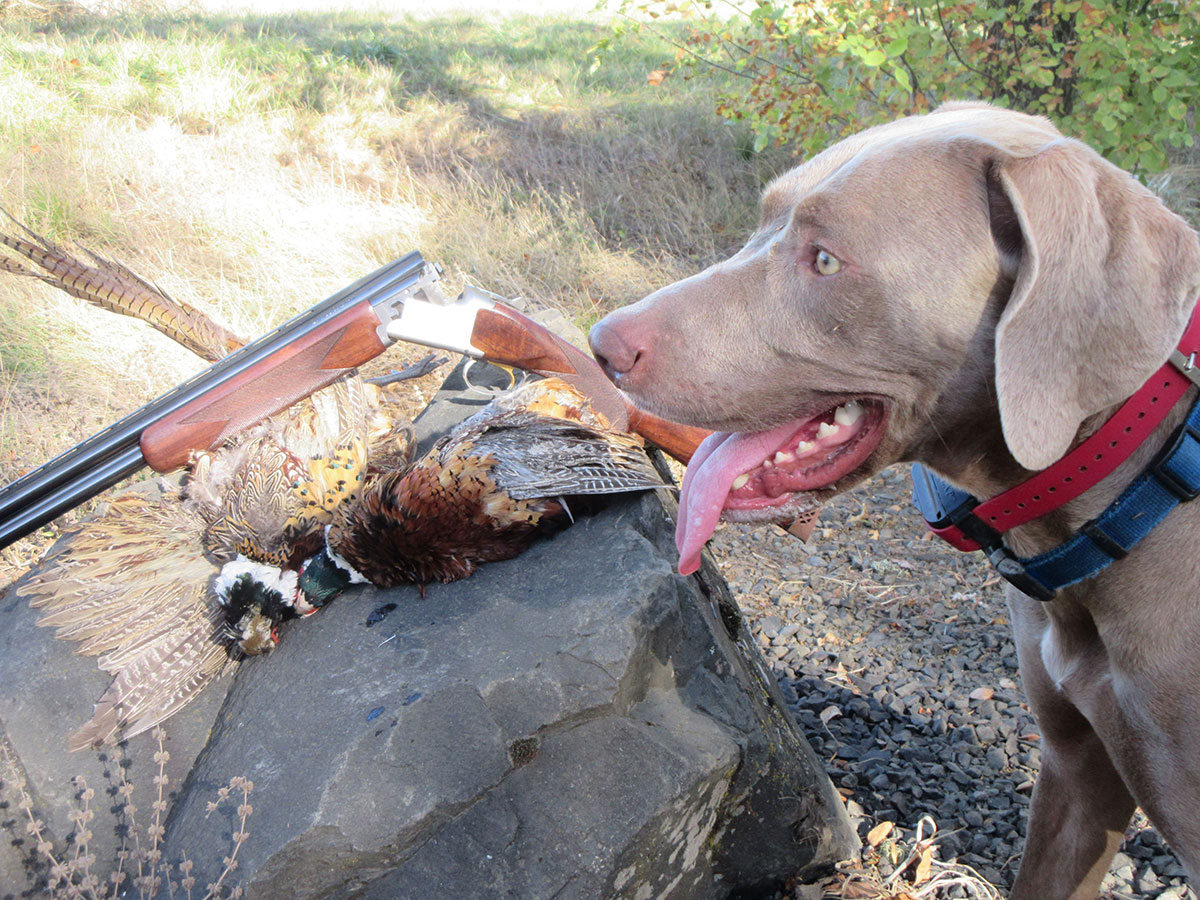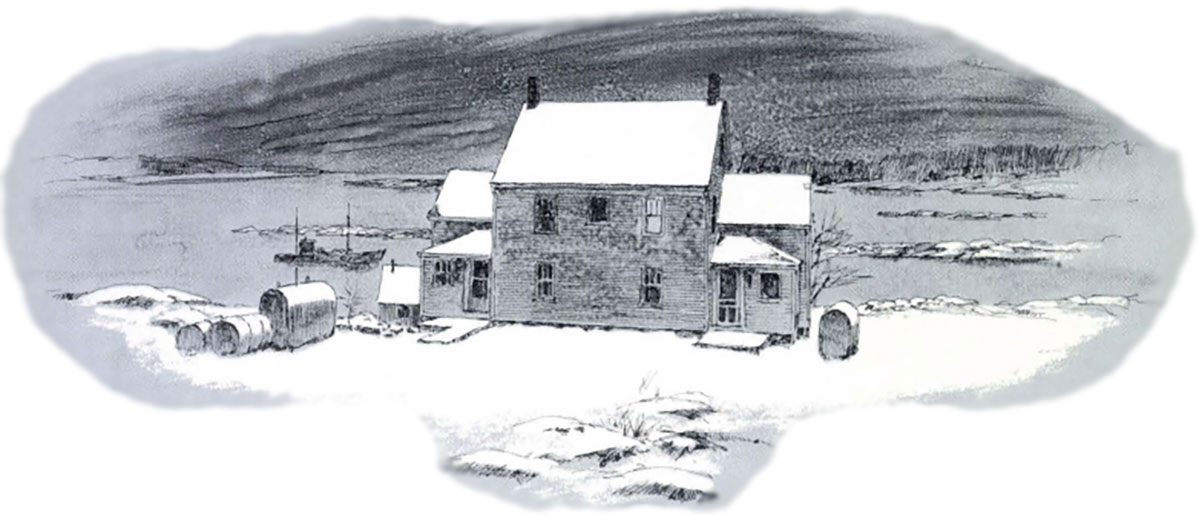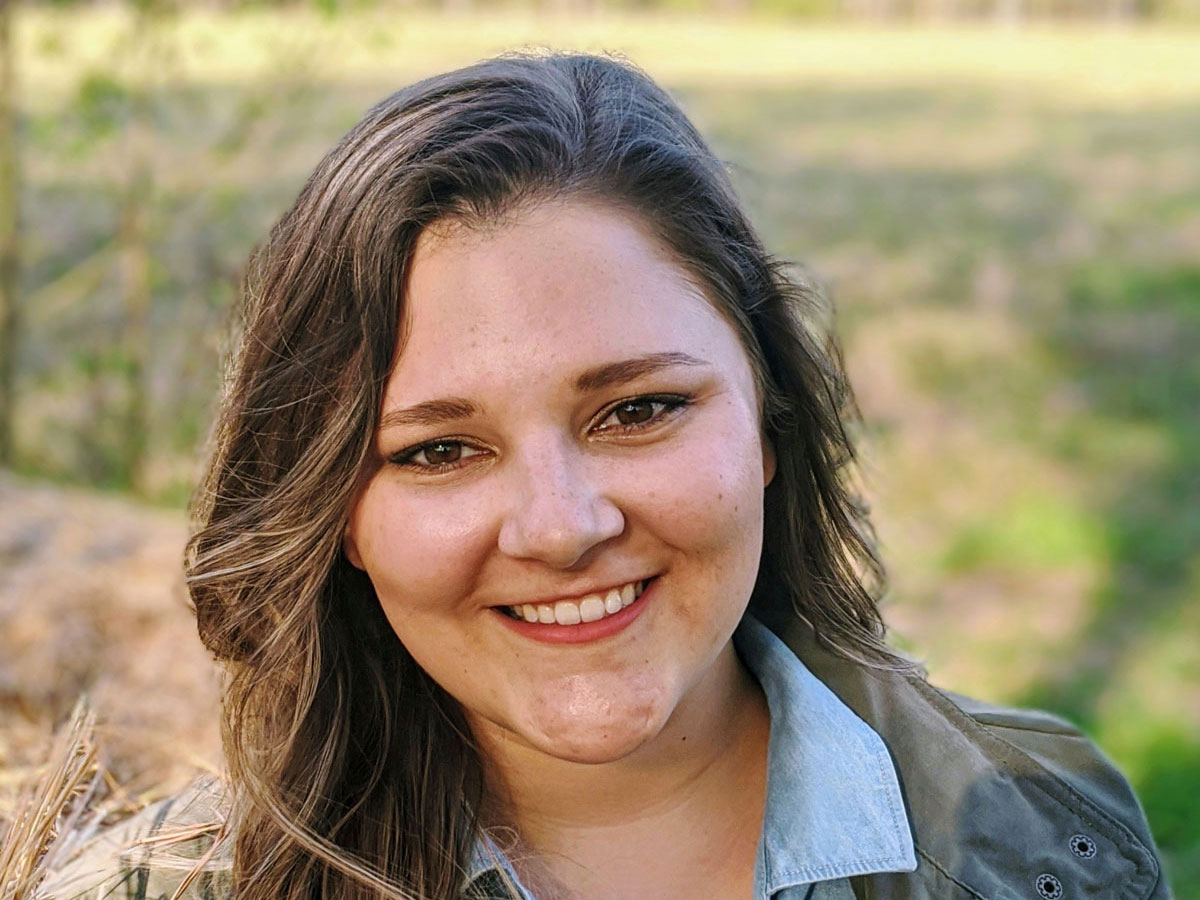An account of some hight times at Highland Hills filled with wild chukar and more!
 The etymological roots of the word chukar can be found in the Urdu language of Pakistan and is described by linguistic experts as being onomatopoeic which, in plain English, means a word derived from a sound associated with what is named. The song of a chukar partridge, for example, is a noisy chuck-chuck-chukar-chukar, a phonetic rendition that is spot on to the bird’s name.
The etymological roots of the word chukar can be found in the Urdu language of Pakistan and is described by linguistic experts as being onomatopoeic which, in plain English, means a word derived from a sound associated with what is named. The song of a chukar partridge, for example, is a noisy chuck-chuck-chukar-chukar, a phonetic rendition that is spot on to the bird’s name.
Further research on my part, however, suggests that the word chukar dates back to an ancient Persian tongue and in that language means “to laugh.” Not just any laugh mind you, but one specifically in the context of, “Ha, ha, I’ve won and you’ve lost.” If you’re an upland gunner, that makes all the sense in the world. The chukar’s call, it turns out, is often emitted immediately after these elusive speedsters have landed unscathed, having once again successfully evaded the No. 6 shot from both of your barrels. After all, where do you think the English word to chuckle comes from?
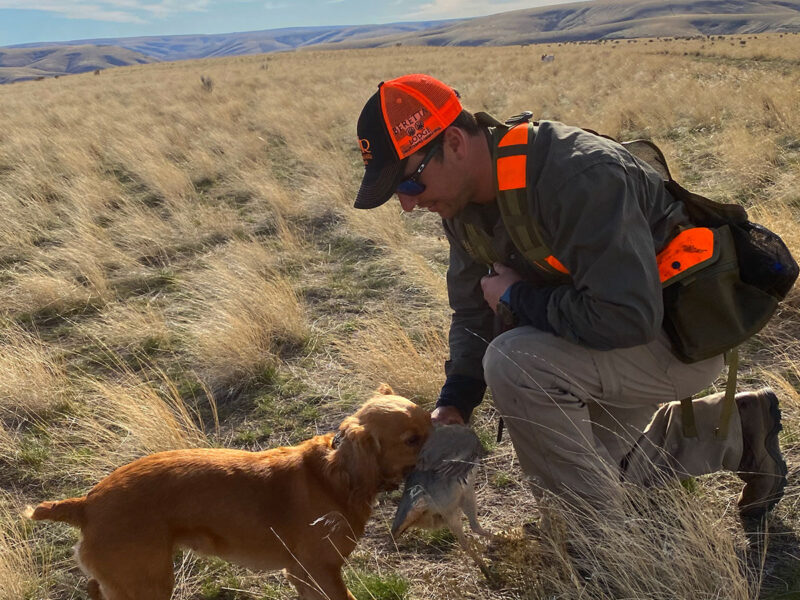 Being the aristocrat that he is, a bobwhite quail prefers the genteel landscape of Southern pine forests, croplands and brushy fields. A chukar partridge, on the other hand, is far more the hardscrabble type, a real tough guy who is right at home in the steep and rock-strewn terrain of the high desert country reminiscent of its native Eurasian homeland. In the United States, the chukar’s preferred habitat is exceptionally well-matched in eastern Oregon, especially in the rimrock country of the Columbia River Basin, an area where chukar from India were successfully released beginning in 1951.
Being the aristocrat that he is, a bobwhite quail prefers the genteel landscape of Southern pine forests, croplands and brushy fields. A chukar partridge, on the other hand, is far more the hardscrabble type, a real tough guy who is right at home in the steep and rock-strewn terrain of the high desert country reminiscent of its native Eurasian homeland. In the United States, the chukar’s preferred habitat is exceptionally well-matched in eastern Oregon, especially in the rimrock country of the Columbia River Basin, an area where chukar from India were successfully released beginning in 1951.
The Oregon Department of Fish and Wildlife makes a great point when it describes the state’s chukar habitat as, “the land no one wanted.” The areas favored by chukar are rocky and arid hills essentially unsuitable for development or agriculture. While habitat loss has, in recent decades, been a key factor in the decline, for example, of bobwhite quail in southeastern states, the chukar is one of those rare gamebirds where the quality and quantity of its habitat in Oregon has not diminished since its introduction to the state some 70 years ago.
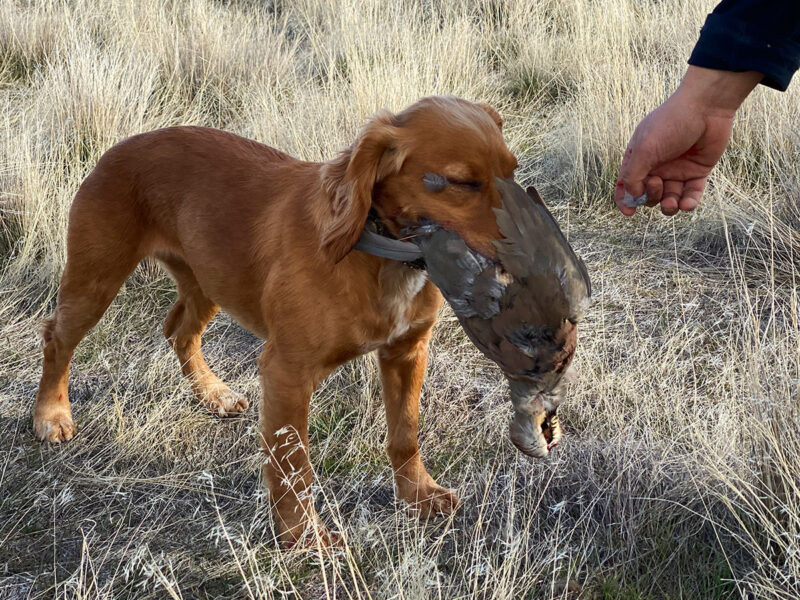 In short, there’s plenty of chukar “in them thar hills,” and I can think of no better place to begin your prospecting efforts than Highland Hills Ranch, located in the “mother lode” area of eastern Oregon’s chukar country. I don’t want to get too ahead of myself here, but there are some lodges I’ve been to where the hunting is great but the lodge is a few ticks off from what you expected. Conversely, there are those places where the lodge experience trumps the gunning. At Highland Hills, there is no shortfall whatsoever at either end of the equation.
In short, there’s plenty of chukar “in them thar hills,” and I can think of no better place to begin your prospecting efforts than Highland Hills Ranch, located in the “mother lode” area of eastern Oregon’s chukar country. I don’t want to get too ahead of myself here, but there are some lodges I’ve been to where the hunting is great but the lodge is a few ticks off from what you expected. Conversely, there are those places where the lodge experience trumps the gunning. At Highland Hills, there is no shortfall whatsoever at either end of the equation.
If you’re coming from a distance, you’ll want to fly in to the Portland, Oregon, airport, which is well served from most hub airports. I flew direct from Atlanta. At the airport, grab a rental car and head east on Interstate 84, a highway that snakes along the mighty Columbia River. It’s a wonderfully scenic drive and gives you a great feel for this part of the Pacific Northwest.
The last 10 miles of the about three-hour drive are along a gravel road that runs along Upper Rock Creek and leads you right up to the lodge itself, a 10,000 square foot log ranch house set high on a hill that overlooks the stream and valley below. Step out onto the patio and watch the evening sun dip behind the hills. Take another sip of one of the truly fine bourbons from the bar. Sit back and relax. It’s a good time to count your blessings.
As much as hunting wild chukar in the high country around the ranch is a standout opportunity, it is by no means the only upland bird hunting featured at Highland Hills. Far from it.
The property is comprised of 3,000 acres that include distinctly different habitats suitable to a variety of gamebird species. Some 300 acres are in food plots that mostly abut Upper Rock Creek and its creek-fed bottom lands. This combination of planted fields bordered by natural vegetation is ideal for pheasant, bobwhite and valley quail and, to top it off, populations of wild Hungarian partridge for whom these agricultural lands bordered by sagebrush foothills represent ideal home ground.
The Oregon Department of Fish and Wildlife notes that “Huns” were first introduced to eastern Oregon from central Europe in 1912 and have maintained stable to abundant populations even though their habitat in the region is more limited than that of chukar.
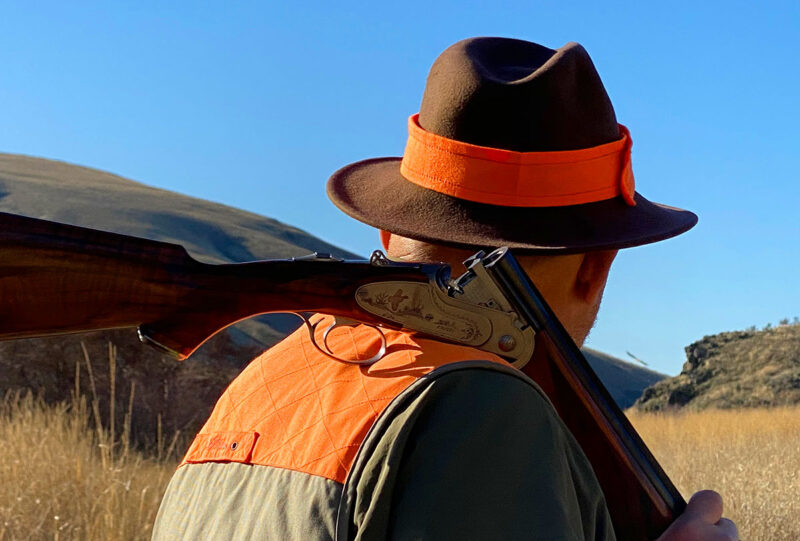
A Prince of Wales stock adds a continental flair to any gun and the shallower grip angle brings the trigger hand in more direct alignment with your eyes and the barrels.
Every day, every hunter at Highland Hills has the opportunity to hunt all these upland species. Bag a pheasant, chukar, “Hun” and either a bobwhite or valley quail and you’ve achieved a Highland Hills Grand Slam. If you happen to get both species of quail, it’s a Super Grand Slam.
If you have a Grand Slam on your mind, you may have to put in the extra mile or two. You will, however, be well fortified to do so. A classic breakfast at the lodge, prepared by resident chef Keith Potter, includes a starter of a medley of fresh fruit followed by a coddled egg in a ramekin sitting atop a base of melted cheeses and, finally, a plate of dollar-sized pancakes topped with a homemade blueberry compote and a side of apple smoked bacon. I’ll tell you, if someone added the adjustable waist feature to brush pants, I’d order at least two pair.
One of the nice pluses about scheduling a trip to Highland Hills Ranch is that during their hunting season, from September through March, this high desert region gets very little rain or snow and what snowfall occurs usually doesn’t stick. In the fall months and March you can often hunt in shirtsleeves and the winter months tend to be cool as opposed to really cold.
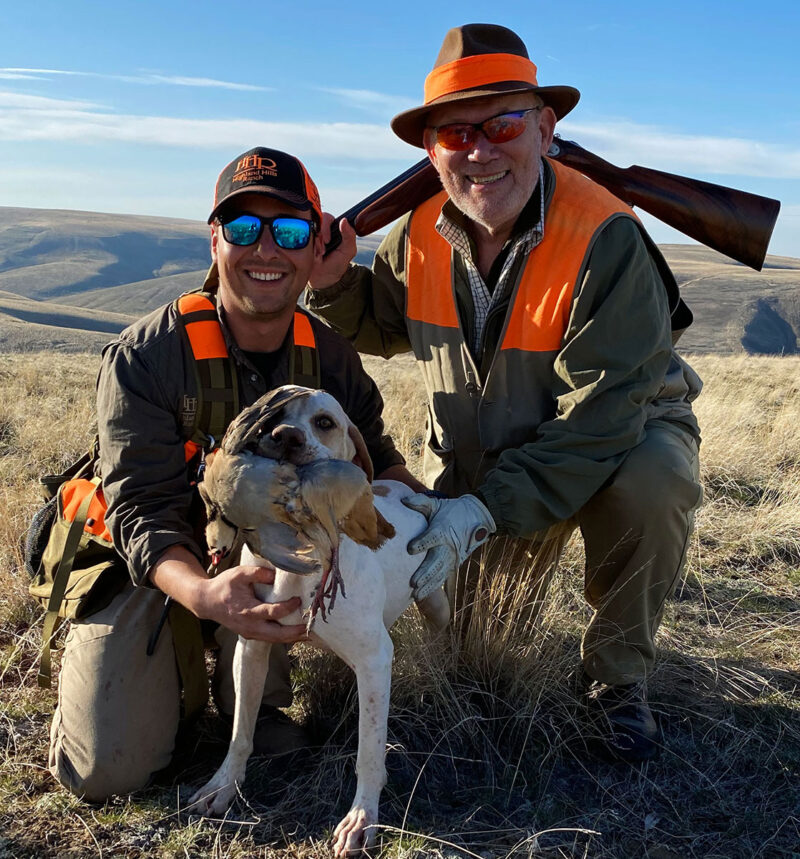
Guide James Norton, an aspiring dog trainer, and author in the hill country favored by chukar.
I had the opportunity to hunt at Highland Hills during the third week of February this year and enjoyed two days of blue skies with temperatures in the mid-50s during each day. My guide was a young man named James Norton, an aspiring dog trainer who brought with him a pair of Brittany spaniels, Zeke and Scout, as well as pair of almost pure white English pointers, Sky and Beja.
Impeccably behaved and always working to the gun, these dogs were stylish as heck to boot. They sure did their part, the rest was up to me.
I had the pleasure of hunting with a Fausti Class SL Upland model in 20 gauge. Two features that I especially liked about this classic over/under design were the solid rib and the Prince of Wales stock. This rib design adds a touch of welcome weight to the light 20 gauge 28-inch tubes promoting a smooth swing and follow-through with every shot. The flowing lines of the Prince of Wales stock adds a continental flair to any gun and the shallower grip angle brings the trigger hand in more direct alignment with your eyes and the barrels of the gun helping to create a straight line orientation between the gun and the target.
The figure in this Fausti’s AAA grade Turkish walnut and oil finished stock was outstanding. A real looker in the guest gun rack at the ranch, like a young Sophia Loren showing up at your backyard barbeque. Bellissima!
James and I started out in a milo field tucked in between Upper Rock Creek and a sagebrush-covered hill on the other side his two Brittany’s zig-zagging through the cover. The ranch has a gaggle of English cockers used to flush pointed birds and to retrieve. I must say, these super energetic little dogs are the life of the party.
By around 11:00 a.m. I had my share of roosters and a couple of chukar that had come down to feed in the milo. We then moved on to the thick cover along the edge of the creek where we bumped up a covey of Huns. One of the birds broke out into the open and I was able to drop it just as it crossed over to the far side of the creek. Our cocker had marked the bird well and, with no hesitation, swam across the creek, grab the bird, and hustled back in a flash. It was the highlight moment of my morning’s hunt.
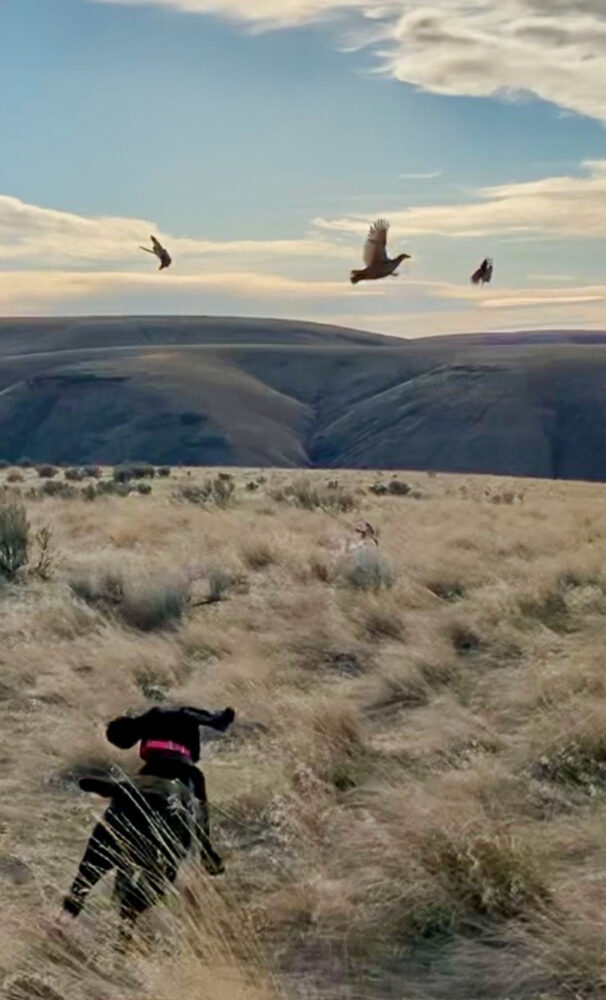 Not 50 yards down along the brushy edge we were hunting, Scout locked up, Zeke honoring the point a few yards back. At the flush, a half-dozen bobwhites burst out flying every which way. I was indecisive for a moment but finally swung on a bird on my right. A lucky Grand Slam, but a Slam nonetheless.
Not 50 yards down along the brushy edge we were hunting, Scout locked up, Zeke honoring the point a few yards back. At the flush, a half-dozen bobwhites burst out flying every which way. I was indecisive for a moment but finally swung on a bird on my right. A lucky Grand Slam, but a Slam nonetheless.
After lunch, a homemade sausage minestrone soup with fresh baked rosemary bread, James and I along with his two pointers headed up to the hill country that surrounds the lodge. This arid landscape is covered with cheat grass — which provides one of the most important year-round food resources for chukar — and dotted with sagebrush, critical cover for these birds.
In some terrain, especially along rocky hillsides, chukar can run you ragged. When bunched up in a pocket of sagebrush, however, they tend to hold well until flushed. That’s a big advantage but, with a seemingly ever present wind at this elevation, hunting these wild birds is the kind of challenging pursuit every hard-core upland enthusiast hopes for. In a word, it’s a hoot.
In addition to the great walk-up hunting at Highland Hills, the lodge offers several annual “Best of the British” driven pheasant shoots hosted by world-renowned shooting instructors Chris Batha or Dale Tate. These three- or two-day shoots include instruction from Chris or Dale on how to best tackle the challenge of high, overhead shots along with their expert opinions on guns and gun fitting.
These traditional events include two morning and one afternoon drive of 300 birds each, a total of 900 birds per day with a Scottish piper in the evening and the opportunity to sample a traditional meal of haggis, tatties (mashed potatoes) and neeps (turnips). The last day is always devoted to a walk-up hunt, a chance for you to shoot the pheasant your buddies missed. There’s also the option of scheduling your own driven shoot during the season with an eight-gun minimum.
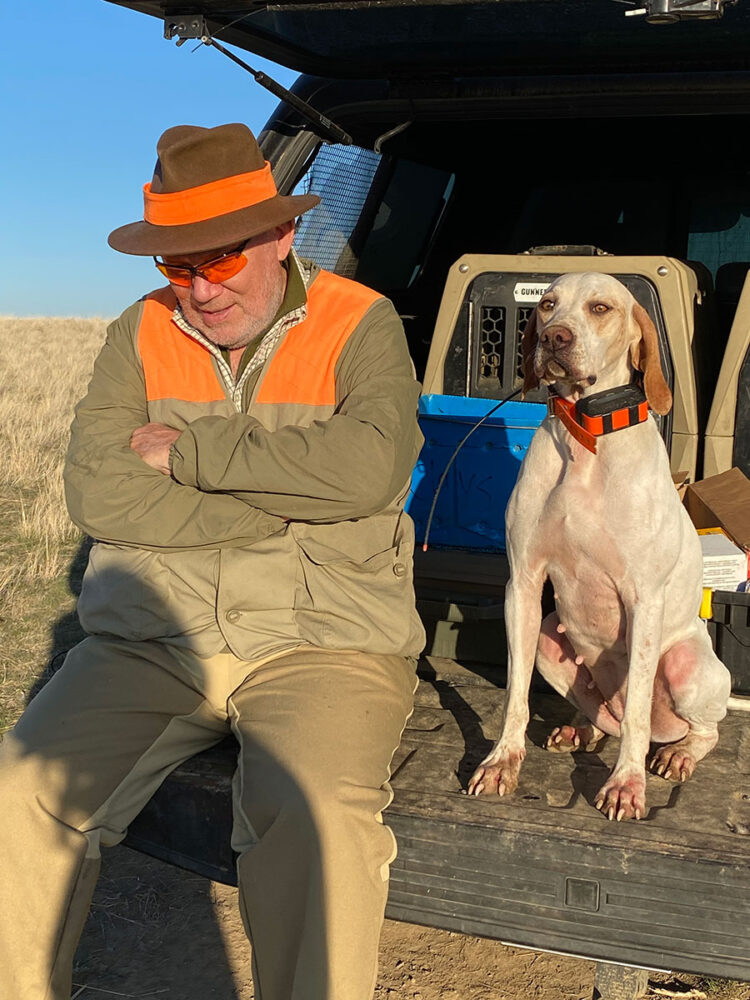
Author rests, recollects and hangs with one of the bird dogs.
The second day of hunting was a delightful repetition of the first with one exception. Yesterday’s breeze up in the chukar hills had turned into a hold-on-to-your-hat wind. While all gamebirds use the wind as an aid in their evasive maneuvers, chukar seem especially adept blasting their way downhill and out of sight before you can get a shot off. It was an afternoon that put my wing shooting skills to a difficult test and, if this had been a boxing match, the judges would have given the nod to the birds.
As the sun began to lower in the sky it lit up the hills of cheat grass, turning this landscape into rolling hills of pale yellow that stretched out to the horizon. I found myself stopping now and then just to admire this grand view.
I did, though, keep an eye on the dogs and paid full attention when Beja went on point ahead of a clump of sagebrush and Sky honored her not far behind. Our cocker ran in and busted three birds out. Surprisingly, one bird flew directly into the wind and I dropped it as it rose almost straight up into the sky. The other two birds hightailed it downhill and downwind. I shot at the bird on the right just as they both crested the hill. The cocker was quick to retrieve the first chukar I shot and, in a minute, Beja came bounding up the hill with the second bird in her mouth. I couldn’t have asked for a better ending act.
I love the way they do dinner at Highland Hills. All guests are seated at a single grand dining table with owners Dennis Macnab and his wife Mindi serving as hosts. It’s a wonderful way to bring everyone together, and make them feel they’re part of a family that’s about to share not only a meal, but also a great day afield the next morning.
For the main entrée at dinner that evening, Chef Keith had prepared a signature dish of his, chukar piccata, that was individually plated and served. Before I took a bite, though, I paused and took a sip of an excellent pinot noir from the state’s Willamette Valley. As I did, I couldn’t help but remind myself just how true that old saying is: He who laughs last, laughs best.
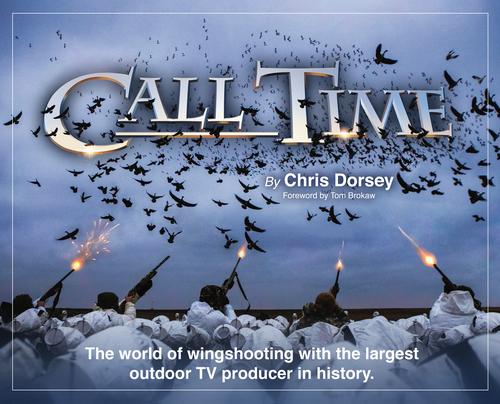 The stunning, large-format book chronicles 18 different wingshooting adventures on four continents. Its chapters feature pheasant, bobwhite quail, ruffed grouse, woodcock, greywing francolin, ocellated turkey, spurfowl, sandgrouse, duck, goose, perdiz, dove, and driven shoots for red-legged partridge, guineafowl, pheasants and grouse. Internationally acclaimed photographers Dusan Smetana, Marcos Furer, Lee Kjos, Gary Kramer, John MacGillivray and many others spent thousands of hours in remote locations to capture a stunning collection of images that help make the 300-page opus an instant classic. Each chapter features a 10-minute corresponding film shot on location during the creation of Call Time. Buy Now
The stunning, large-format book chronicles 18 different wingshooting adventures on four continents. Its chapters feature pheasant, bobwhite quail, ruffed grouse, woodcock, greywing francolin, ocellated turkey, spurfowl, sandgrouse, duck, goose, perdiz, dove, and driven shoots for red-legged partridge, guineafowl, pheasants and grouse. Internationally acclaimed photographers Dusan Smetana, Marcos Furer, Lee Kjos, Gary Kramer, John MacGillivray and many others spent thousands of hours in remote locations to capture a stunning collection of images that help make the 300-page opus an instant classic. Each chapter features a 10-minute corresponding film shot on location during the creation of Call Time. Buy Now
